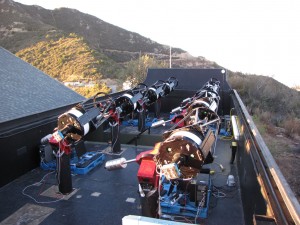Wet World
Announcements of newly discovered planets come so frequently these days that it’s hard to tell which ones are significant. But GJ 1214b deserves its moment of fame.Discovered by a team led by David Charbonneau of the Harvard-Smithsonian Center for Astrophysics, the planet is only 5.4 times the diam…

Announcements of newly discovered planets come so frequently these days that it's hard to tell which ones are significant. But GJ 1214b deserves its moment of fame.
Discovered by a team led by David Charbonneau of the Harvard-Smithsonian Center for Astrophysics, the planet is only 5.4 times the diameter of Earth, one of the smallest ever found. Its mass is just 6.5 times Earth's, yielding a density about twice that of water, which leads to speculation that the planet has deep oceans. It orbits very close to its host star—a red dwarf called GJ 1214 located 40 light years away in the constellation Ophiuchus—so its surface should be as hot as Venus. And that's actually pretty cool for such a close-in planet.
All of this adds up to what planet-hunter Geoff Marcy, writing in the current issue of Nature (which published Charbonneau's paper), calls "the most watertight evidence so far for a planet that is something like our own Earth, outside our Solar System."
Almost as impressive is how the planet was discovered—with an array of telescopes no bigger than what many serious amateurs have at home. The new MEarth (pronounced "mirth") project hopes this is just the first Earthlike planet to be discovered around a small, nearby star—which is exciting news.